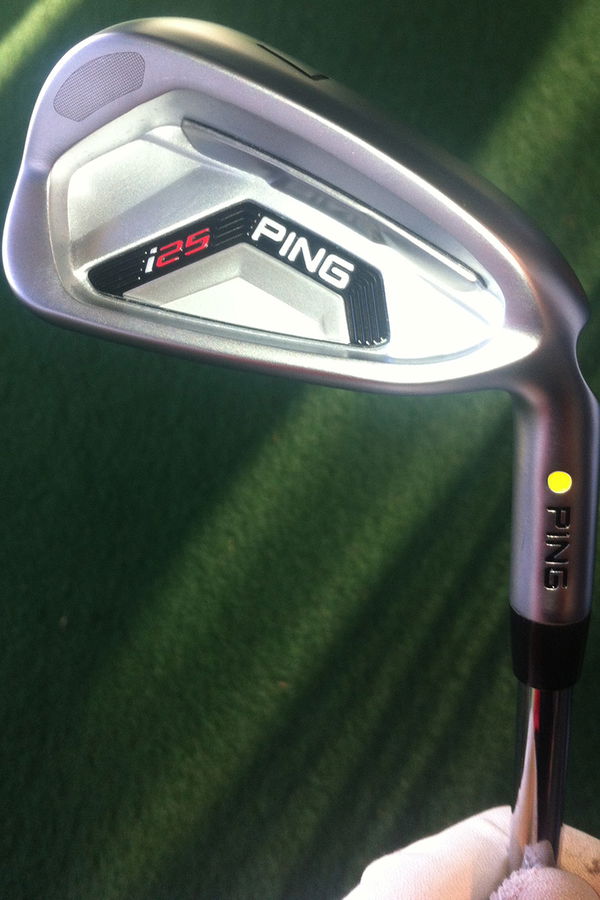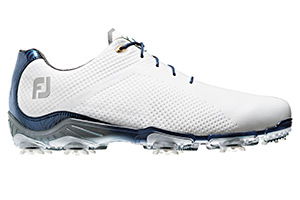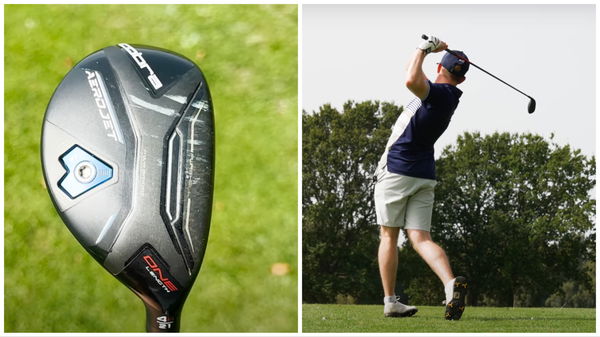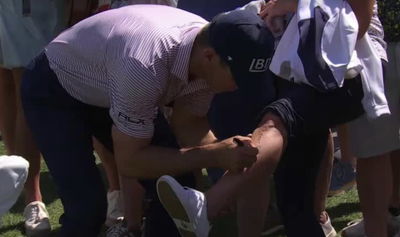PING i25 irons: review
What do we make of the brand new i25 iron from PING?

WHILE I've all the respect in the world for PING irons, I've never really found one that appeals.
Yes, exceptional performance is always guaranteed from these guys whether it be game improver or player stick, but for the most part, PING irons have always looked a little too chunky and off-putting for me.
Yet all those thoughts were quickly dispelled when I was custom fit for a set of the new PING i25 irons at official PING Europe headquarters in Gainsborough yesterday. It was love at first sight.
Custom Fitting Experience
Through half a century of experience in custom fitting, PING is a leader in its field. Once warming up with a few shots with my normal bats, the fitting began with that all-important interview process. My fitter for the day, Ed James, wanted to learn more about my iron tendancies and preferences.
Ed then predetermined some crucial static measurements in order to establish my ideal lie angle, club length, shaft type and flex, by measuring my height and wrist-to-floor measurement. This data was processed to determine the correct colour code from PING’s ground-breaking colour code chart that features a range of 12 options depending on specification. All this attention to detail is an integral part of the PING fitting process.
Locating my data on the wall chart, I landed at white, and it was time to get fit.
Using impact tape and a hard board, Ed then re-established the above specifications from my swing and impact position - this is known as the ‘Dynamic Swing Test.’ Once these crucial measurements were confirmed, ball flight was analysed through PING's very impressive nFlight technology - the industry's first virtual fitting software to precisely model, digitally analyse and scientifically compare every aspect of every shot it captures.
From then on in, it was a case of sampling the numerous shafts the fitter recommended to me before landing at one that felt best, looking closely at the shot data as well personal feel off the club face.
i25 iron review
On first look of the PING i25 iron, cavity back and cast from 17-4 stainless steel, I love PING's delightful foggy chrome finish. I always have if I'm honest.
i25 features tungsten weighting out in the low toe to help with twisting at impact and aid forgiveness, narrow face-stabilising bars in the long irons to increase zip off the face and get the ball airborne and wider bars in the short irons for greater control.
In terms of design, there's a neat squat head design on offer with a reasonably thin top edge and barely any offset to speak of, particularly in the scoring clubs. It's a very good looking iron and has that better player appeal, but at the same time, has plenty of game improvement qualities behind it. This iron, like its former i20 iron, could be used by any one ranging from the Tour professional (such as Lee Westwood, who used the i20) or the double-digit handicapper.
i25 sits in between the brand new S55 better player iron, for golfers who favour smaller-sized heads that offer more workability, versatility and a softer feel, and the slightly older game improver G25 iron, for players who don't mind the larger-sized irons that aid better forgiveness and a higher ball flight.
Somewhere in the middle falls the i-Series golfer, who needs more forgiveness than the S-Series irons can provide, but doesn’t want to play a set of irons as large the G-Series.
In terms of performance, i25 provided me with the forgiveness I've come to expect of the G25 but with the looks at address of the S55. Placing i25 and S55 down at address and it was like my bank account. Not much in it.
i25, like the S55, is incredibly soft feeling off the face. I enjoyed a nice click sound at impact on a consistent basis. It's by no means over powering and very hard to fault in terms of feel, particularly when striking the ball with my custom fitted KBS Tour shaft.
Hitting the ball straight is never usually a problem for me with an iron. It's the ability to get the ball airborne on a consistent basis that needs improvement. i25 was delivering a consistently towering ball flight and generated strong distance. I was averaging a carry of 155 yards with the i25 7-iron, total distance of 160, launch angle of 19-degree and spin rate around the 5000rpm mark.
Just like the G25, the longer irons have a little longer blade lengths and wider soles which I found helped me get the ball up higher, further and closer to my target line on mishits. The irons also have thinner, more narrowly spaced stability bars in their cavities that make their faces livelier.
The short irons more closely resemble the S55, however, with shorter blade lengths and narrower soles for added versatility and less offset for more trajectory control. The stability bars in their cavities are thicker and wider-spaced, adding consistency and creating a softer feel at impact.
The main difference comapared to previous PING irons with the new i25 is that there's a vertical Custom Tuning Port (CTP), an thermoplastic polyurethane (TPU) insert that is positioned much lower in the head, freeing up precious grams of discretionary weight that designers used to fine tune ball flight across the set.
Verdict
If you're looking to up your ball speed, improve distance and gain maximum height from your irons, particularly from the 7-iron down, look no further than the PING i25 this season.
In terms of performance, I found the i25 delivered terrific forgiveness, above-average distance and great control throughout, particularly when I was custom fitted to my correct stiff shaft.
£90 per club isn't cheap (that's £630 for 4-PW) and so I'd thoroughly recommend getting custom fit (as I always would) if you decide to take the plunge on the i25s this season. Add in the fresh looks and soft feel at impact and the i25 is sure to be a massive hit with golfers around the world.
For more information on how to get custom fit with PING, visit www.PING.com
Sponsored Posts
Latest News












